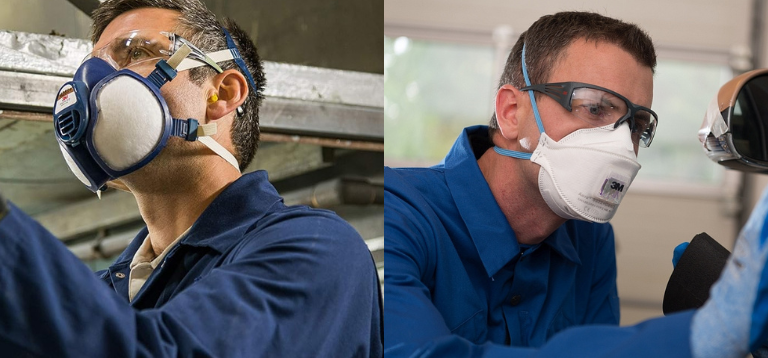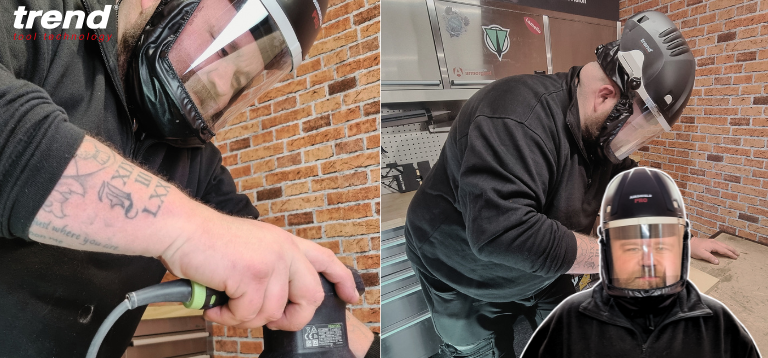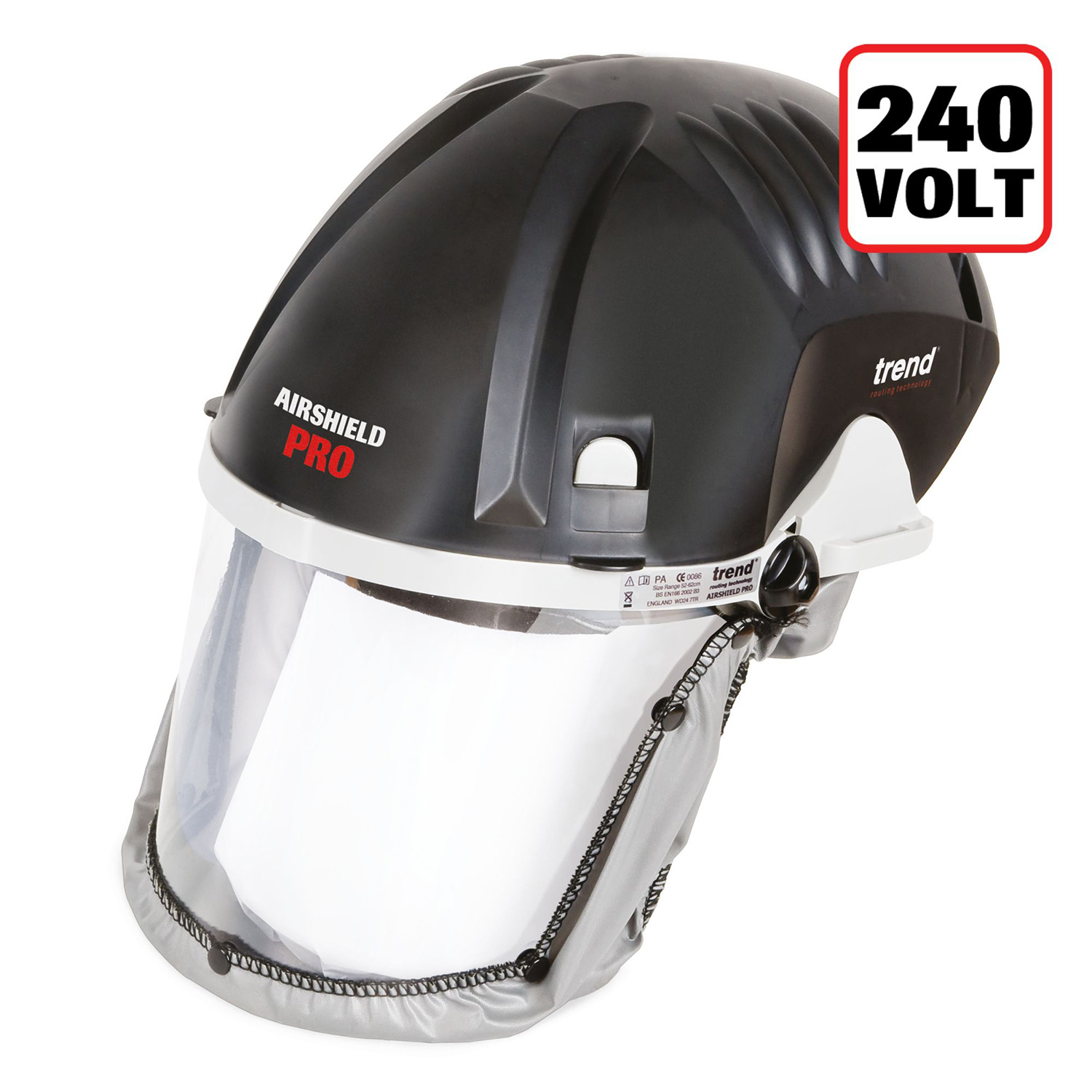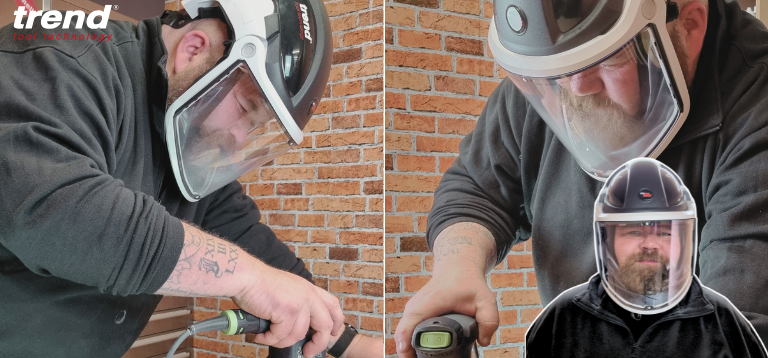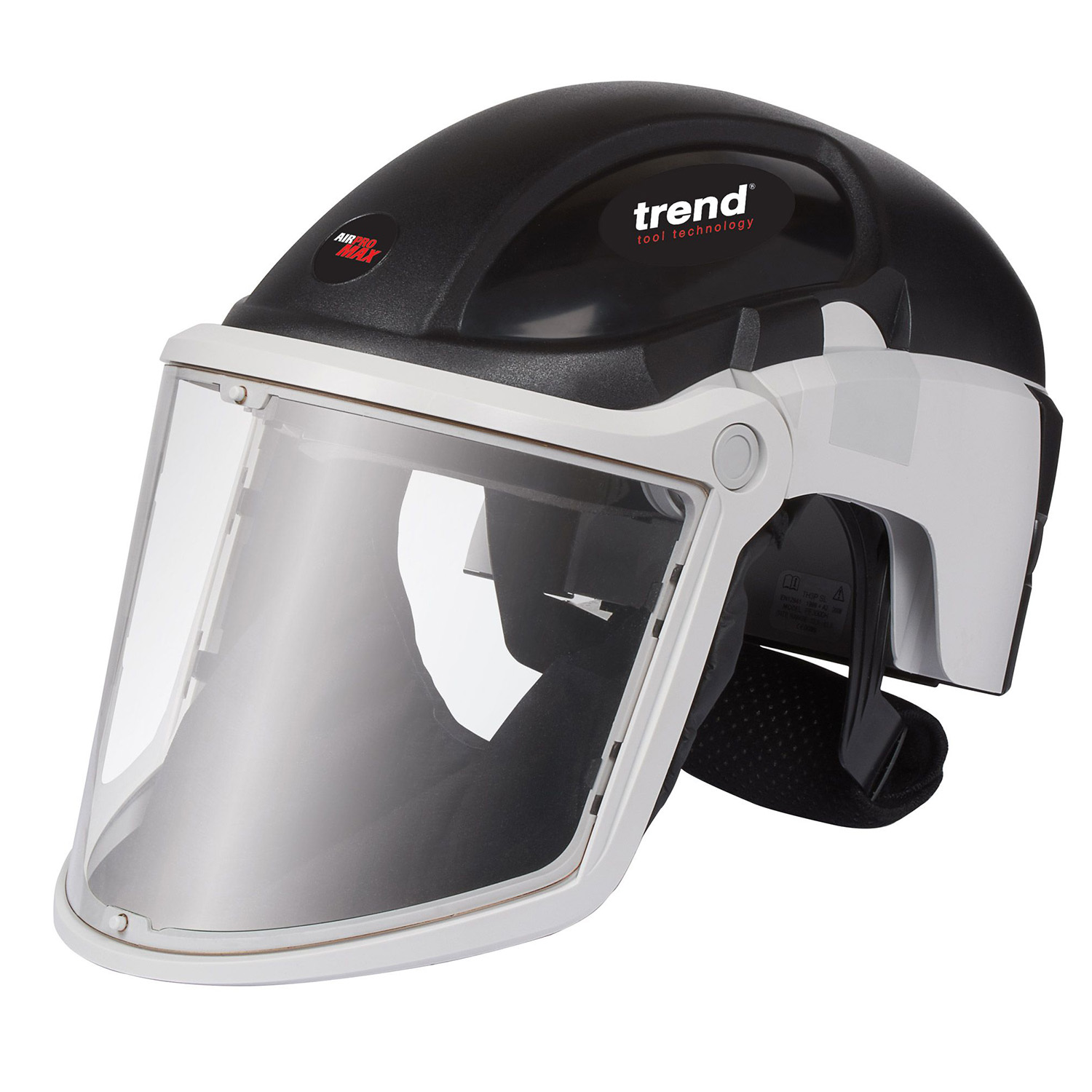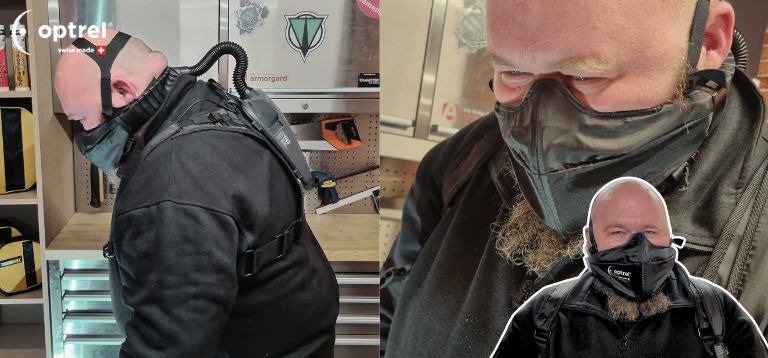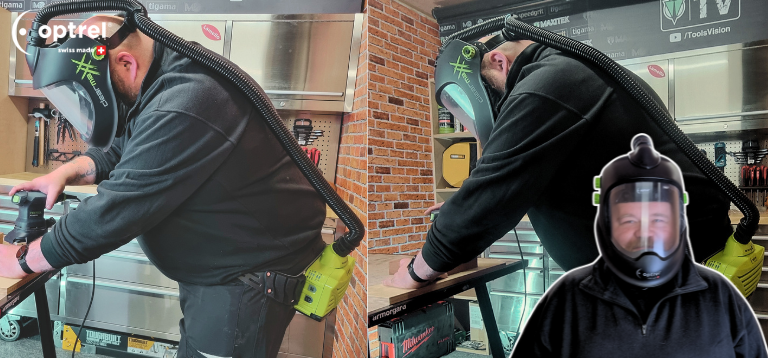Are PAPR masks the best respirators for beards and facial hair?
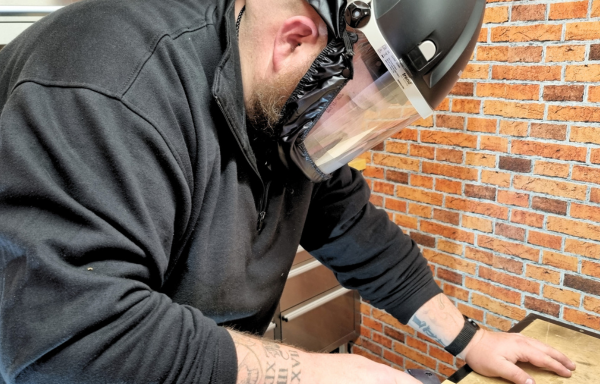
Many people working within the construction industry will regularly engage in activities that expose them to harmful dust. It’s evident, that far more construction workers are now wearing dust masks which is a positive trend. In most cases, the respirators being used in workshops and on site, are disposable types or elastomeric half masks with filters. Whilst these masks can provide very effective protection against harmful particulates, they are ineffective when worn by people with beards and facial hair.
The need to be clean shaven, presents a practical and personal issue for workers that need to wear a mask, but prefer to sport facial hair. On the flip side, employers that enforce a clean-shaven policy become very unpopular and risk losing key members of staff. So, what is the solution?
In this article we are going to discuss:
- What are the risks of dust inhalation within the construction industry and who does it affect?
- What is a tight-fitting dust mask?
- What steps need to be taken before wearing a tight-fitting dust mask?
- What are the advantages of a tight-fitting dust mask?
- What are the disadvantages of a tight-fitting dust mask?
- Is there an alternative to tight-fitting dust masks?
- What are loose-fitting PAPR masks and how do they work?
- Is a loose-fitting PAPR system a suitable dust mask for beards?
- What are the advantages of a loose-fitting PAPR mask?
- What are the disadvantages of a loose-fitting PAPR mask?
- What are the protection levels of a loose-fitting PAPR mask?
- Which loose-fitting PAPR system should I choose?
What are the risks of dust inhalation within the construction industry and who does it affect?
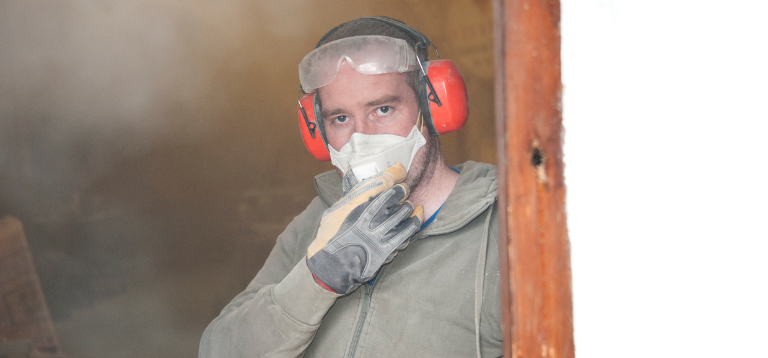
There have been various campaigns over the years concerning asbestos and the life-threatening diseases it can lead to. However, many workers within the construction industry are still unaware of the risks from silica dust, released when working with concrete, stone, rock, clay and sand. Prolonged exposure to silica dust can lead to silicosis, an irreversible condition that causes severe shortness of breath and can leave you housebound. Worse still, it can increase the risk of lung cancer and other serious diseases such as tuberculosis and COPD.
Wood dust is also associated with an elevated risk of lung cancer, especially when working with some types of hardwood.
Some examples of construction segments that are exposed to dust:
- General Building: drilling, breaking and cutting masonry – risk of silica exposure.
- Joinery: sanding, sawing and machining wood – risk of carcinogenic wood fibres.
- Kitchen, Bathroom and Bedroom fitting: exposure to carcinogenic wood fibres from joinery works and silica exposure from cutting tiles and quartz worktops.
- Decorating: paint preparation may require sanding of wood, metal and plaster, leading to exposure to carcinogenic wood fibres, lead paint dust, and silica dust.
- Landscaping: cutting paviours with grinders & petrol masonry saws – risk of silica exposure.
- Plumbing: drilling with diamond core cutters – risk of silica exposure.
- Rail: dumping ballast – risk of silica exposure.
It’s interesting to see that even outside work has a risk attached, it’s a mistake to believe that you’re safe if working outdoors.
What is a tight-fitting dust mask?
Filtering facepieces or respirators are also known as tight-fitting masks. That is, a mask that requires a good seal to the wearer’s face, usually a disposable or rubber elastomeric half mask.
What steps need to be taken before wearing a tight-fitting dust mask?
- Face fit test: people come in all shapes and sizes and this is true of facial profiles and features. Thus, not all masks fit everyone correctly. To ensure there is an adequate seal to the wearers face when using a tight-fitting mask, a face fit test must be performed. This ensures that the user only breathes air in through the filters on the mask, and not the gaps between the face and the mask.
- The same type and brand of mask must be worn: a face fit test remains valid providing the operative always wears the same mask the test was taken with. If the mask changes, another face fit test needs to take place.
- The wearer must be clean shaven.
What are the advantages of a tight-fitting dust mask?
- Regardless of whether they are disposable, semi-disposable, or elastomeric rubber half masks that take replaceable filters, tight-fitting respirators are relatively low cost on an initial purchase basis.
What are the disadvantages of tight-fitting dust masks?
- Face fit testing is expensive and often necessitates getting employees together in one sitting to make it cost effective.
- The fit test is only applicable to a single type of mask. If the mask isn’t available or the employer changes the masks they purchase, a new face fit test must be performed.
- Face shapes are unique, so companies may have to stock and supply different types of masks to suit everyone.
- As stubble and beards can create tiny channels for harmful particulates to enter the mask, it is essential that the wearer is always clean-shaven for the respirator to be effective. With facial hair and beards being in vogue, it becomes extremely difficult and unpopular for employers to implement a clean-shaven policy in the workplace. Of course, even if such a policy is mandated, it still needs someone to monitor it which is extremely time consuming and costly.
- Most disposable respirators are classed as single use, so they should be disposed of at the end of a shift – this can become very expensive.
- A tight-fitting mask relies on the lungs drawing air through the filters. This can become physically demanding when performing manual labour, especially in warm environments and hot weather.
- Re-usable respirators such as rubber half masks that take replaceable filters, need to undergo scheduled examinations to ensure the equipment is working correctly.
- Something often overlooked, is that disposable masks are made from polypropylene non-woven filter materials. That’s an awful lot of plastic waste!
Is there an alternative to tight-fitting dust masks?
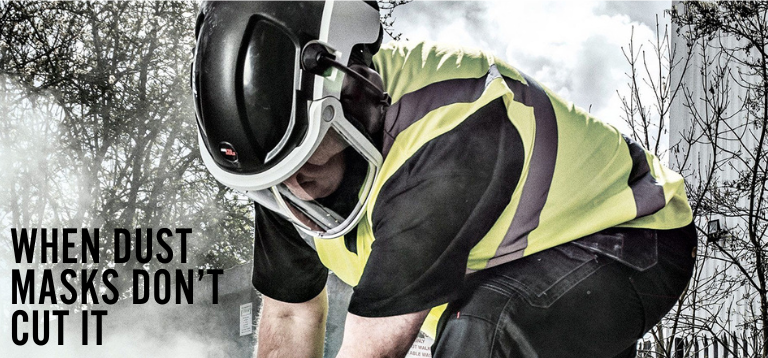
Yes!
PAPR Powered Air Purifying Respirators, often referred to by the HSE as ‘loose fitting’ masks, are a practical and convenient alternative to tight-fitting masks.
What are PAPR masks and how do they work?
PAPR systems work on a positive pressure concept, delivering filtered air into a head-top or mask via a battery powered motor unit. The clean air going into the mask, pushes away any particles on the outside denying harmful dust entry into the facepiece.
Is a PAPR system a suitable dust mask for beards?
The Positive Air Pressure concept of delivering filtered air to the wearer, means a tight seal is not required. Not only does this negate costly face fit testing, this type of dust mask provides protection for workers who have beards, stubble and moustaches.
What are the advantages of a loose-fitting PAPR Mask system?
- No face fit testing is required.
- PAPR systems are suitable for people with beards, stubble and moustaches.
- A single dust protection solution for all workers helps to reduce inventory and is easier to manage.
- Breathing requires far less effort when compared to wearing a tight-fitting mask.
- Cooler, more comfortable and hygienic to wear.
- 10 x greater protection from dust * TH3 vs P3 respirator.
- Reduced ongoing costs.
- Less disposal of waste and plastic contamination.
- Potential for head top units to provide head and eye protection.
- No misting of spectacles and face visors.
- As the mask is not in tight contact with the face, there are no pinch points and skin irritation is reduced.
What are the disadvantages of a loose-fitting PAPR Mask system?
- Initial purchase cost is higher than tight-fitting masks.
- PAPR masks aren’t maintenance-free and still require scheduled examinations to ensure the equipment is working correctly.
- The operator must remember to charge the batteries.
What are the protection levels of a loose-fitting PAPR mask?
PAPR Powered air purifying respirators, use a TH protection class, whereas Filtering Face Pieces FFP use a P rating – such as P3.
| Protection Class | Retention Capacity of the Filter | Leakage | Total Protection |
| FFP2 | 94% | 8% | 86% |
| FFP3 | 99% | 2% | 97% |
| TH2 | 99.99% | 2% | 98% |
| TH3 | 99.99% | 0.2% | 99.8% |
As you can see, a TH2 PAPR system is comparable to a P3 dust mask, whereas a PAPR system in the TH3 protection class allows just 0.2% leakage, which is 10 x better protection than a P3 dust mask. It is also worth noting, that due to the lower retention capacity of the filter and significant leakage of FFP2 dust masks, they do not provide adequate protection from silica and wood dust.
Which loose-fitting PAPR system should I choose?
There are many PAPR systems available. Typically, these comprise of:
- All in one head-top units.
- Back-pack systems.
- Belt mounted systems.
The four PAPR systems featured below, are the most popular amongst Protrade customers:
Trend AIR/PRO Airshield Pro
The Trend AIR/PRO powered respirator places its motor and twin filtration system within a head-top cradle. This keeps the unit compact and eliminates breathing hoses. Offering TH2 protection, the Trend Airshield Pro is our most affordable PAPR unit and is very popular with woodworkers.
Key features:
- TH2 protection class.
- 8 Hour battery life.
- Built in eye protection visor to class B – suitable for use with angle grinders.
- Compatible with clip on Ear Defenders.
Trend AIR/PRO/M Air Pro Max
Designed for heavy duty use in the workshop and on site, the Trend Air Pro Max takes protection to the next level with TH3 filtration. A Lithium-ion battery powers a motor unit capable of delivering 220 l/min of airflow, situated within an EN397 hard hat shell. Ideal for construction workers that require head, eye and respiratory protection in a comfortable and compact unit.
Key features:
- TH3 protection class.
- Supplied with 2 x detachable lithium batteries offering 4hr run time each, so you never run out during a working day.
- Padded adjustable head harness and a soft facial cuff, remains comfortable for all day use.
- Head protection to EN397 standards, the same as a construction hard hat.
- Built in eye protection visor to class B, suitable for use with angle grinders.
- Compatible with clip on Ear Defenders.
Optrel Swiss Air PAPR Powered Respirator & Controller
When PAPR experts Optrel, created the Swiss Air TH3 powered air purifying respirator, they were looking for a system that offered the highest levels of protection and could also be combined with other PPE – Personal Protective Equipment.
Featuring a lightweight blower unit which is worn as a backpack, Swiss Air is extremely comfortable and unobtrusive. Clean, filtered air is delivered into a ventilated half mask that can be used with other types of PPE such as; spectacles, goggles, face shields, hard hats, ear defenders and welding masks. Without doubt, Swiss Air is the most versatile PAPR system available.
Key features:
- TH3 protection class.
- Detachable lithium-ion battery offering up to 14hrs run time on a single charge.
- Airflow calibration monitors automatically increase the fan speed when the filter becomes clogged, so the user experiences optimum airflow at all times.
- Pre-filter system spares the main filter from premature clogging, significantly reducing running costs.
- A Separate chest mounted controller makes all functions available to the wearer, without having to remove the blower unit and half mask. Filter and battery status is also clearly visible.
- IP54 splashproof and dust proof rating for inside or outside use.
- ATEX Zone 2 & ATEX Zone 22 certified for safe working in environments where explosive atmospheres can occur.
- ABE1P and odour filters for protection against ozone, acidic gases and organic/inorganic vapours are also available.
- Additional facepieces can be purchased enabling the main blower unit to be shared with others.
Optrel E3000X & Clearmaxx Visor PAPR Package
The Optrel E3000X belt mounted blower unit can be paired with Optrel PAPR visors, Optrel PAPR soft hoods and Optrel PAPR welding helmets, providing respiratory protection for applications such as sanding, grinding, routing, welding and spraying.
Key features:
- TH3 protection class.
- Detachable lithium-ion battery offering up to 18hrs run time on a single charge.
- Very high airflow rate provides comfortable and safe working, especially in manual labour applications.
- Unlike many other PAPR systems, that require a manual airflow check to ensure air is flowing through to the facepiece, the Optrel E3000X does it automatically. This function promotes safe working in case the operator forgets this essential safety procedure.
- Automatic fan speed monitoring reacts to filter contamination.
- ATEX Zone 2 & ATEX Zone 22 certified for safe working in environments where explosive atmospheres can occur.
- Audible alarm to alert the user that no filter is present or is blocked.
- Pre-filter system spares the main filter from premature clogging, significantly reducing running costs.
- ABE1P and odour filters for protection against ozone, acidic gases and organic/inorganic vapours are also available.
- Clearmaxx visor offers 180° field of vision for full awareness of work surroundings.
- Visor offers protection to class B standards – suitable for use with angle grinders. Shade 3 and 5 visors for gas and plasma cutting are also available.
The answer to the question ‘What dust mask can I wear if I have a beard?’ suggests that PAPR systems such as the ones featured in this article offer a practical, comfortable, and cost-effective solution.
Indeed, the demand for PAPR systems at Protrade has been growing exponentially. When we first started talking about PAPR systems a few years ago, we may have supplied 3 in 100 days. More recently, and particularly if a customer has received a visit from the HSE, resulting in a fee for intervention, it’s been known for us to distribute 100 PAPR systems in just 3 days!
The mandatory requirement of face fit testing, and the necessity of being clean shaven, has undoubtedly caused a headache for employers and employees alike. However, with a solution to the problem being readily available at Protrade, protecting workers from long term illness can’t be a bad thing – can it?
If you think you may need a PAPR system and would like to discuss your requirements, we would love to hear from you. Simply complete the form below and we’ll be in touch.
* Required.
Related Articles
- Five different dust mask types & when to use them
- Milwaukee BOLT 100 and BOLT 200 Hard Hat Safety Helmets
- Which are the best Milwaukee Safety Boots for me?
- 7 Best Knee Pads for Work
- What are the best Velcro sanding discs for wood and other materials?
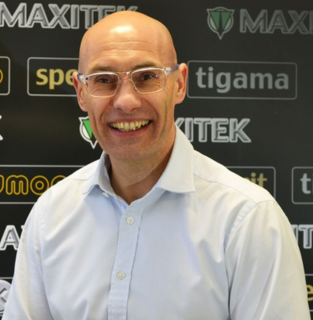
Joint Managing Director, Protrade
Des has over 30 years of experience at Protrade, having worked in the capacity of Sales Co-ordinator, Account Manager, and product development, culminating in being appointed Joint Managing Director in 2018.

